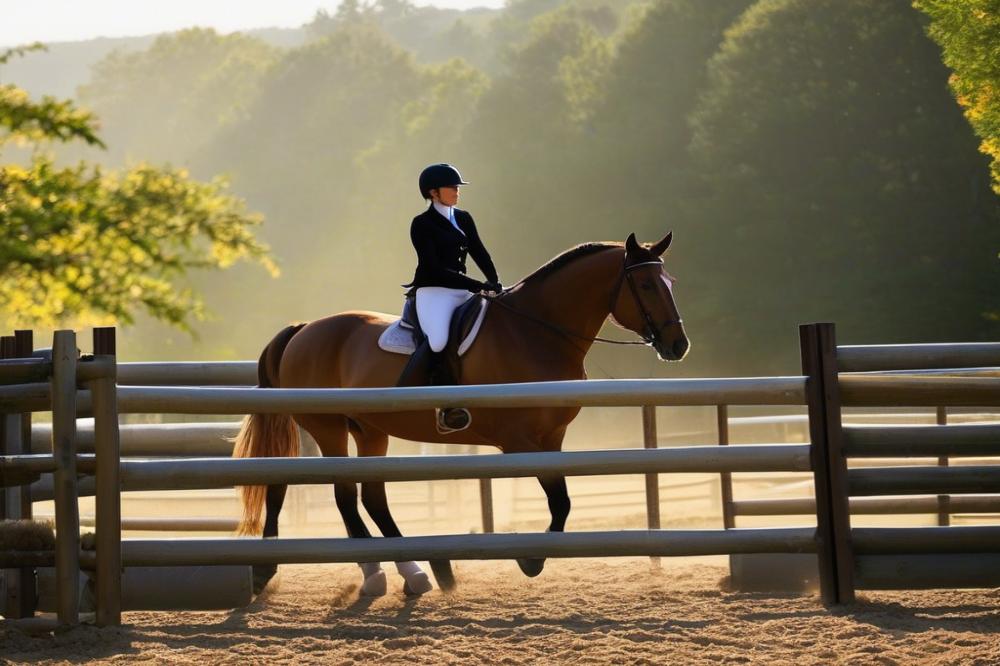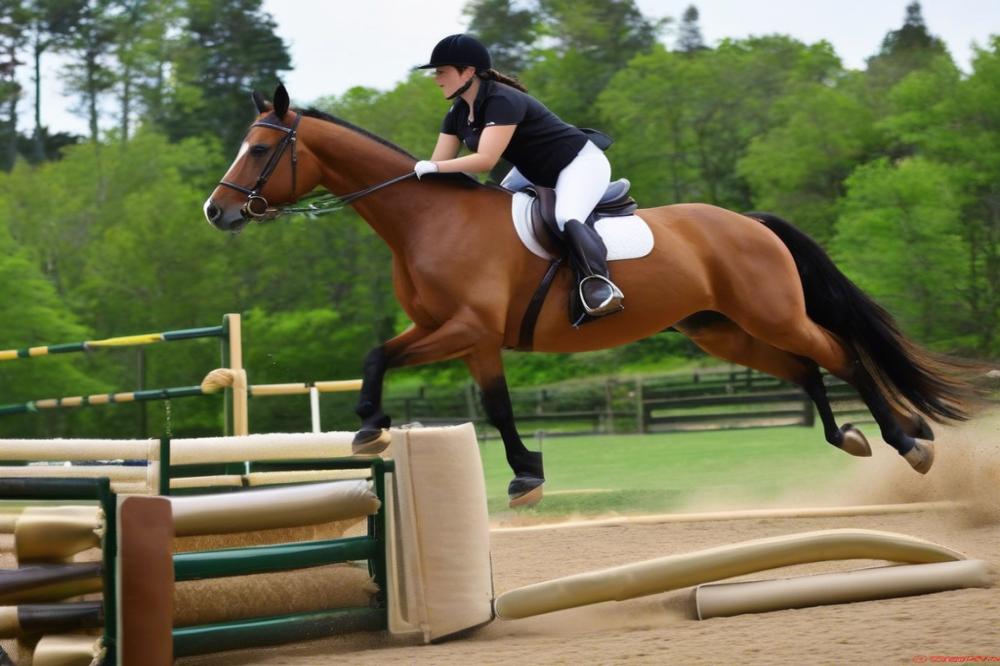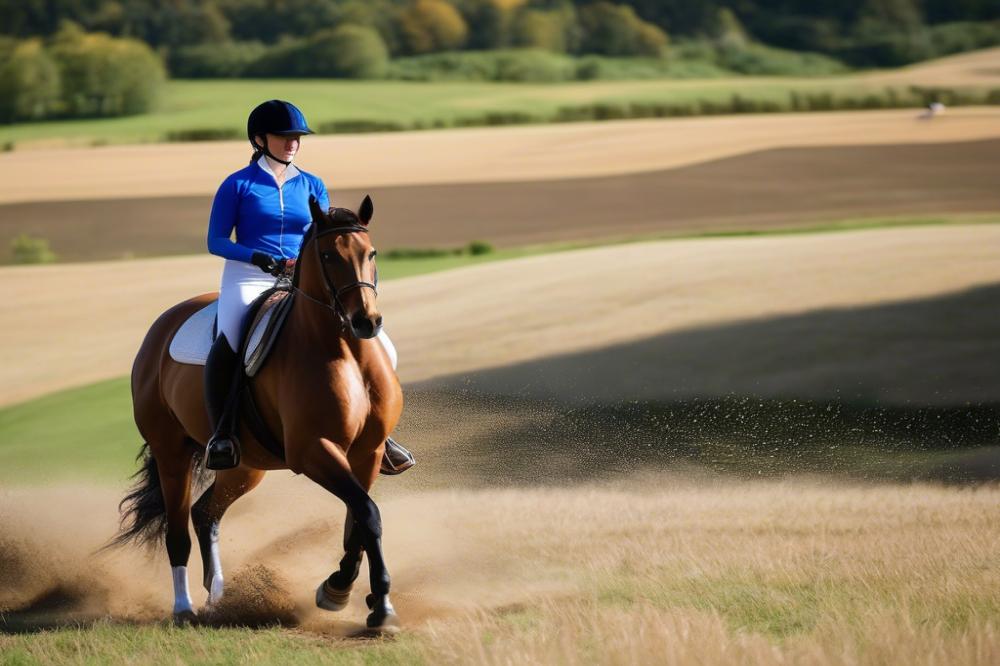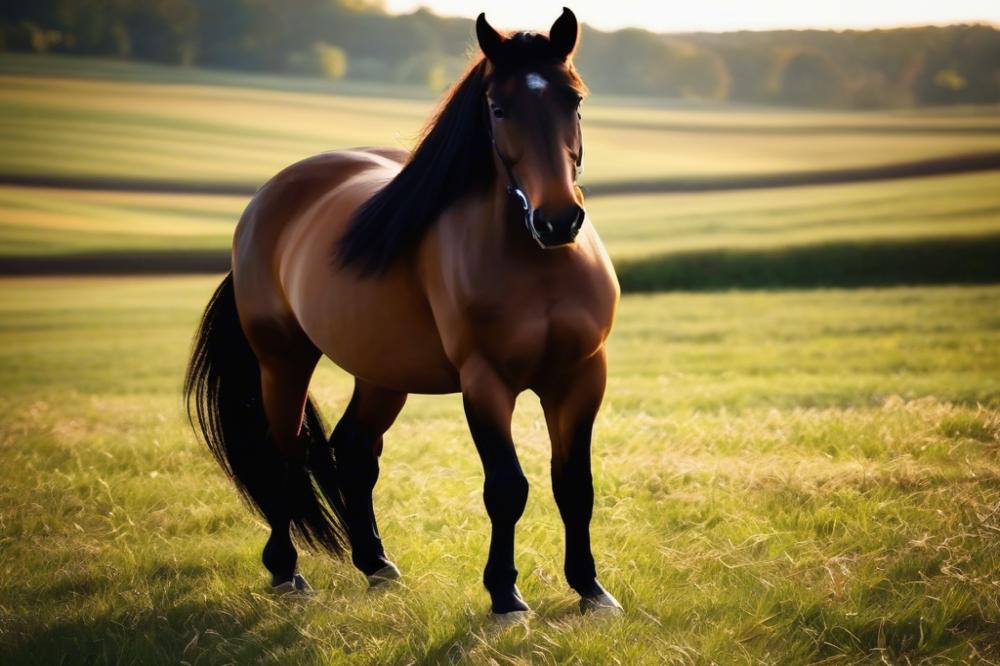Why Horseback Riding Matters
Horseback riding is more than just a fun activity. It’s an incredible way to bond with these majestic creatures while improving your physical and mental well-being. Whether you dream of galloping across open fields or turning in precision dressage moves, riding offers a unique adventure for everyone. The thrill of riding can spark a passion that lasts a lifetime.
Benefits for You and Your Horse
Riding can do wonders for both riders and horses alike. For riders, it’s a fantastic workout that improves balance, coordination, and strength. Every trot and canter helps build muscle, while also keeping your mind sharp and focused. Did you know that the act of riding can be a great stress reliever? One moment you might be anxiously worrying about a test at school, and the next, you’re lost in the soothing rhythm of your horse’s movement.
For our equine friends, effective horse training and care are crucial. A happy, well-exercised horse is more likely to perform well and bond positively with its rider. Understanding different riding styles also makes a big difference. Each style brings its own techniques and knowledge that enhance the riding experience. For example, the buckskin horse breed, known for its striking color, thrives with attentive training and considerate handling.
The Goal of Our Journey Together
This article aims to share effective tips to help you improve your riding skills. You’ll find practical advice that ranges from horse care basics to advanced equestrian techniques. Readers of all levels will benefit, whether you’re just starting out or looking to refine your style. Remember, even seasoned riders can always learn something new! Riding improvement is a continuous journey, and that’s what makes it so exciting.
Moreover, ensuring your horse stays healthy and vibrant is essential too. After all, nobody wants to deal with issues like selenium deficiency in horses. So, grab your boots, hold on to your reins, and let’s dive into the world of horseback riding together. You’re one step closer to mastering your riding passion!
Understanding Your Horse

Learning Horse Behavior and Communication
Riders must understand that horses are incredibly expressive animals. They communicate mainly through body language. For instance, a swishing tail can indicate irritation or discomfort. Pay attention to their ears, too; forward-facing ears show curiosity, while pinned-back ears signal annoyance. Building good equestrian skills involves observing your horse closely. Learn to interpret these signals to improve your riding experience. It can be like learning a new language, but don’t worry, practice makes perfect!
Building Trust and a Bond with Your Horse
Creating a strong relationship with your horse is essential. Trust often starts with simple things like consistent grooming. When you take the time to nurture your horse through horse care, your bond deepens. Each brush stroke and gentle word helps your horse feel more secure with you. Imagine how much better your rides will be when your horse trusts you! Consistency is vital here. Use the same approach during training; it builds familiarity and comfort.
Importance of Knowing Your Horse’s Abilities and Limitations
Knowing what your horse can and cannot do is like reading a map, guiding you through your journey together. Some horses excel in certain riding styles while struggling with others. Take the time to assess their strengths and weaknesses. This assessment plays a big role in horse training and riding improvement. For example, if your horse isn’t built for jumping, pushing too hard might lead to setbacks. Understanding their capabilities helps you set realistic goals. Keep your expectations in check, and both you and your horse will thrive.
Proper Riding Technique

When it comes to properly riding a horse, posture is vital. Sitting up straight is not just about looking good; it helps with balance. Imagine you’re a tree—your trunk needs to be strong and stable, while your branches can move freely. Keep your back straight and your shoulders back. This way, you can communicate better with your horse!
Using various aids to guide your horse is essential in developing your equestrian skills. Your legs should gently encourage the horse to move forward. If you squeeze gently, it’s like a nudge. Hands play a crucial role too. Holding the reins correctly allows you to steer smoothly. Remember, a gentle pull is usually more effective than a strong tug. Your voice can help, too. A simple “whoa” or “let’s go” can be very effective in getting your horse to respond.
Balance is another piece of the puzzle. If you sway too much, you could end up on the ground, and nobody wants that! Think of yourself as a pendulum, staying centered as your horse moves in different directions. Practice makes perfect! As you improve, you’ll notice that your stability enhances your riding styles. Feel the rhythm of the horse beneath you. When you’re in sync, it’s a magical experience.
Learning proper riding techniques is not just about the physical aspects. Mental engagement is just as crucial. Being aware of your horse’s behavior can help you understand its needs better. If it seems tense, you might want to adjust your approach. That’s good horse care! Observing your horse distinctively can lead to better training outcomes.
As you practice, don’t forget to enjoy the ride! Laughing at little slip-ups can help ease the pressure. Everyone makes mistakes while getting the hang of these equestrian techniques. Riding improvement does not happen overnight, so be patient with yourself. Your horse is your partner, not just a vehicle. Treat it with respect, and you’ll have a lovely camaraderie that will shine through every ride.
Riding Gear and Equipment

Choosing the Right Saddle for Your Horse
Finding a suitable saddle is an essential part of horseback riding. The right saddle can make all the difference in your comfort and performance. A proper fit is crucial; it ensures your horse can move freely. An ill-fitting saddle can lead to back pain for both horse and rider. Take the time to measure your horse’s back. Several options are available, including Western and English styles. Each riding style might require a different type. Remember, no two horses are alike, and neither are their needs. If shopping seems daunting, consider asking an experienced equestrian. They can guide you through the selections.
Importance of Fitting a Bridle and Bit
Next up is the bridle. It’s not just a pretty accessory; it plays a vital role in communication between you and your horse. Without a well-fitted bridle, you may find it challenging to ride effectively. The bit can significantly impact how your horse responds to commands. A proper fit can prevent discomfort and encourage cooperation. Riders may choose different bits based on their equestrian skills or riding styles. Don’t shy away from exploring various types. Testing what works for your horse takes patience and time. Remember, a happy horse is a willing partner.
Essential Riding Gear for Safety and Comfort
Safety gear should always be a priority when riding. Start with a well-fitted helmet. It protects your head in case of falls, which can happen to even the best riders. Next, consider wearing riding boots. They help maintain a solid grip in the stirrups and can prevent your foot from slipping. Additionally, wear comfortable, breathable clothing. You want to move freely on your horse. A good pair of gloves can also help. They provide a better grip on the reins and protect your hands. If you’re serious about riding improvement, investing in quality equipment is key. The right gear not only makes you feel good but also boosts your confidence on the saddle.
Regular Training and Practice
To improve your equestrian skills, setting realistic goals is key. Think about where you want to be in a few months. Do you want to jump higher or master a new riding style? Breaking down big goals into smaller, achievable ones makes progress feel important. Celebrating these little victories keeps the motivation alive!
A consistent training routine is essential. It’s like watering a plant—without regular care, growth can stall. Riding every week, or even better, several times a week, helps you build muscle memory. The more you practice those equestrian techniques, the better you’ll become. Remember, consistency is the name of the game.
Investing in lessons from a qualified instructor cannot be stressed enough. They can spot flaws in your form and guide you on horse care and horse training. Picture this: you’re out riding, and suddenly your instructor shows up. They help you unlock something new, and suddenly everything feels smoother. Their expertise can open doors to skills you never thought possible.
Finding the right teacher is like discovering a hidden treasure. The relationship between student and instructor is vital. A good instructor tailors lessons to your needs. Each session should challenge you without feeling overwhelming. You’ll learn more about various riding styles, enhancing your overall experience.
Mix it up! Change your training locations occasionally. Riding in a new environment can be refreshing. It keeps your horse engaged and helps you practice adaptability. This also gears you up for real-world riding challenges.
Lastly, don’t forget to have fun. Horseback riding should be enjoyable, after all! Share laughs with fellow riders and make memories along the way. This keeps the passion alive while honing your riding improvement. Get out there, ride like the wind, and always keep your eyes on the horizon!
Understanding Different Riding Disciplines
Horseback riding is a vast world filled with various riding styles. Understanding these can help you become a better rider. Think of riding styles as different flavors of ice cream—there’s something for everyone!
Overview of Various Riding Styles
Dressage is like ballet for horses. Riders work on precise movements and improved harmony with their steeds. Then we have jumping, where both horse and rider take to the air over obstacles. It’s thrilling and requires a good mix of trust and technique. Lastly, western riding brings a more casual vibe. Picture cowboys and the open range. Here, the focus is on control, smoothness, and often a bit of flair.
Choosing a Discipline That Suits You and Your Horse
Finding the right riding style is crucial. Ask yourself what excites you. Do you want to perform in a dressage arena or gallop over jumps? Each of these disciplines requires specific equestrian skills, so your choice will shape your journey. Talk to trainers and fellow riders. They can offer insights about which disciplines match your horse’s personality, too. After all, not every horse is built for every sport!
Benefits of Cross-Training in Multiple Riding Styles
Dabbling in different riding styles can be a game changer. When you try dressage, it sharpens your balance and control. Jumping can boost your confidence and bravery. Western riding, with its relaxed approach, can teach you patience and a whole new way to bond with your horse. Each style offers unique equestrian techniques that enrich your horse care and horse training experiences.
Imagine a jumper who takes a few dressage lessons. Suddenly, their horse moves with more grace! The benefits are undeniable. You’ll start noticing riding improvement in ways you didn’t expect.
Feeling adventurous? Mix it up! Your horse will appreciate the variety, and you’ll have fun exploring the diverse world of horseback riding together. Just remember: learning is a journey, not a destination!
Physical Fitness for Riders
Imagine trying to run a race without warming up. Sounds silly, right? Just like running, horseback riding requires good fitness and strength. Riders have to stay balanced while guiding their horse. Without core strength, you might feel like a ragdoll on a rollercoaster!
Importance of Rider Fitness and Strength
Being fit helps with everything from stamina to coordination. Strong legs help you maintain pressure against the saddle. Good upper body strength means your hands won’t shake when giving subtle cues. These skills are essential for mastering different riding styles. Poor fitness can lead to fatigue, which isn’t fun when you’re aiming for riding improvement.
Exercises to Enhance Riding Performance
So, what can you do to build strength and boost your equestrian skills? Think about squats. They help build leg muscles, allowing you to grip the saddle tightly. Lunges are fantastic too; they improve balance and flexibility in your legs. Core workouts are vital, so plank it out! Just a few minutes a day can do wonders. Swimming is another great choice. It works out many muscles while being easy on the joints.
Benefits of Flexibility and Core Strength for Equestrians
Without flexibility, you might find it hard to move with the horse. Stretching is your friend! Try reaching for your toes or doing some yoga. Even a few minutes of stretching before a ride can help keep you limber. When your core is strong, you’ll feel more in control and confident. Equine partners love a balanced rider, and your horse will thank you for it!
Remember, riding is not just about the horse. It’s also about you! Keeping fit helps not only in horse care but also in horse training. Having more energy translates into better equestrian techniques and a more enjoyable experience in the saddle.
Building a Supportive Riding Community
Riding can sometimes feel like a lonely journey, but it doesn’t have to be. Seeking mentorship from experienced riders can make a huge difference. Learning from someone who has walked the path before you allows you to gain insights on equestrian skills that books just can’t teach. Mentorship can turn confusion into clarity, especially when you’re faced with challenges in horse care or training.
Joining riding clubs or groups is another fantastic way to enhance your experience. Surrounding yourself with fellow equestrians creates a sense of belonging. It also gives you opportunities to learn new riding styles, share equestrian techniques, and even make lasting friendships. You might find that horse enthusiasts can be just as passionate about your interests as you are!
Sharing experiences with fellow riders enriches your learning. Think of it like a potluck dinner where everyone brings a dish. Each person has a unique perspective, and that variety makes for a more fulfilling experience. Maybe you have a favorite exercise that helped improve your riding. Imagine sharing that with someone and helping them on their journey! The support you find can really motivate you to work on your riding improvement.
Don’t forget about those off-the-horse moments, either. Engaging in discussions about horse care can deepen your understanding of what it takes to keep your horse healthy and happy. You might hear about different methods for training that could open your mind to new concepts. Always be ready to absorb knowledge; it’s like collecting jewels that can add sparkle to your riding life.
So, get out there and build your riding community! The journeys you’ll share with others can lead to new insights and make horseback riding even more enjoyable. Remember, it’s not just about the finish line, but also about the friends you meet along the way!
Wrapping It Up: Your Journey in Horseback Riding
As we reach the end of our discussion, let’s recap some essential horseback riding tips. Concentrate on maintaining a strong balance and a relaxed posture while riding. Remember, communication with your horse is vital. You want them to know what you need without having to shout it. Patience is another key ingredient in the recipe for success. Sometimes, it takes a bit of time for both you and your horse to get in sync. Celebrate the little wins along the way, whether it’s mastering a new technique or simply enjoying a beautiful ride under the sun.
Now, I encourage you to take these tips to heart. Applying them may feel challenging at first, especially if your horse has a mind of its own! Think of it like learning to ride a bike—wobbly at first, but soon you’ll be cruising with confidence. Every rider improves at their own pace, and the important thing is to enjoy the journey. You’ll find that the bond you share with your horse turns into something special. In fact, the heart of the horse human relationship is built on trust, understanding, and a little bit of humor for those awkward moments.
When it comes to types of riding, just like dressage horses breeds, each style has its quirks and challenges. Perhaps you enjoy jumping, or maybe slow, thoughtful rides are more your speed. It doesn’t matter! What truly counts is the joy you find in the process. Riding isn’t just about the destination; it’s about the bonding experience with your equine partner. So next time you saddle up, let go of any pressure. Embrace the ups and downs of your riding journey, and remember to wear a smile. After all, every great rider was once a beginner, and every stumble just gets you one step closer to success!



